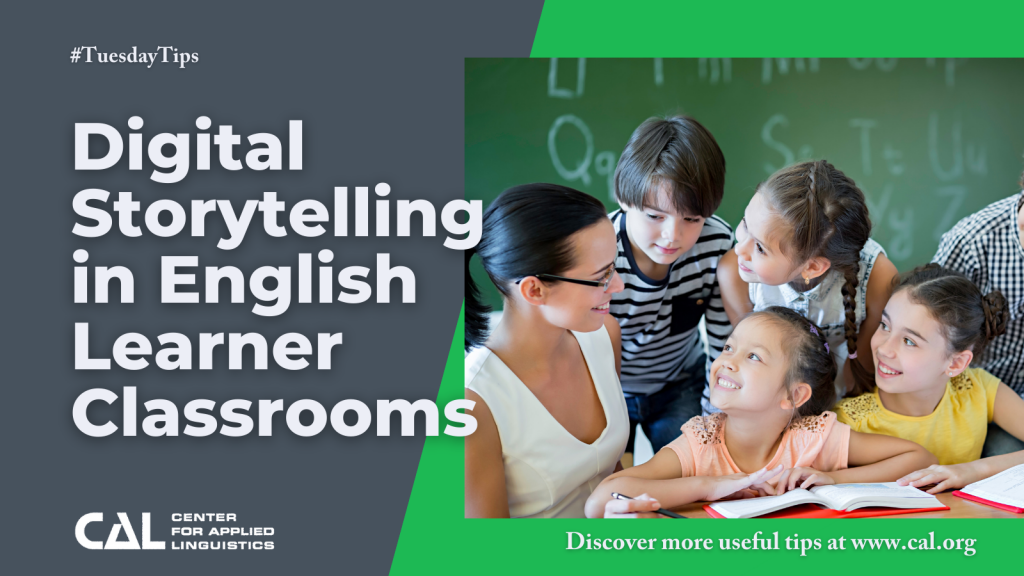
TuesdayTips is brought to you by CAL Solutions
Both the Common Core State Standards (CCSS) and the Next Generation Science Standards (NGSS) focus heavily on developing students’ content-area knowledge, while also exposing them to, and encouraging the use and development of, 21st century technology skills (see this link for a look at how technology is woven into the CCSS and check out this link for technology associated with the NGSS).
One way to support students’ technology skills, while also developing content-area learning, as well as making connections with students’ backgrounds is through digital storytelling, which involves using multimedia for students’ creation of stories. These might include still images, video clips, or narration tracks. Digital storytelling projects might be original creations or interpretations of various types of texts read in class. They create important opportunities for students to explore, engage creativity, incorporate background knowledge, and express themselves without heavy reliance on English proficiency or writing production.
In addition to students’ own literacy practices, these storytelling activities can also be key teaching opportunities for EL students because they use multimedia, therefore providing extra scaffolding through images, audio, and video.
Resources & Ideas
- For an overview of digital storytelling, including specific examples, check out this resource from Reading Rockets.
- For examples and many more resources to help get you started, including an overview of the software appropriate for digital storytelling, as well as some “how-to” recommendations, check out this website from the University of Houston.
- Still interested in more information? Check out this link regarding the integration of digital storytelling with EL instruction.
- Also, for discussion on how to assess multimodal student work, such as digital storytelling, check out this article from the International Literacy Association.

